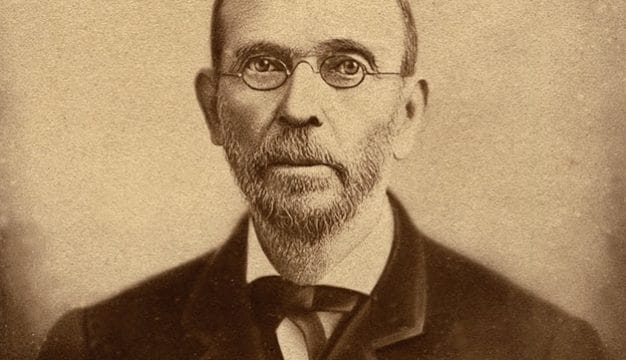Panic of 1819
The Panic of 1819 was the first significant economic crisis in the United States and led to failed banks, property foreclosures, and widespread suffering in Alabama. The calamity resulted from the declining value of cotton—Alabama’s main export crop—as well as other national commodities. The problem was worsened by a scarcity of bank loans and investments, leading to a further drop in prices of northern manufactures, southern agricultural products, and real estate in Alabama and other frontier states and territories. These issues, together with a shortage of gold and silver and British demands that debts be paid in hard currency (specie), contributed to an economic collapse in the Atlantic World.
When the War of 1812 ended in 1815, there was a dramatic resumption of trade between the United States and Europe. Southern agricultural producers and northern businessmen, however, needed loans to increase production to meet the growing demand for their products. Realizing that these developments provided money-making opportunities, bank officials made more loans, which led to inflation, or rising prices, as typically accompanies such increased demands for products. In addition, the increased availability of western lands for sale by the federal government, especially in Alabama, attracted land-hungry settlers and speculators largely from the Carolinas, Georgia, and Virginia. (The 1814 Treaty of Fort Jackson had ceded some 23 million acres of Native American land to the United States.) The outcome of “Alabama Fever” was overvalued real estate and a great need for enslaved labor, which few new planters had the cash to purchase outright. Producers, merchants, real estate speculators, commodities brokers, and bankers alike aimed to make quick profits during this period.
An oversupply of goods, particularly cotton, coupled with inflation led to a reduced demand for American cotton and other products by 1818, resulting in decreased profits for cotton growers, brokers, and bankers. This development led to a rapid drop in production, catastrophic levels of northern unemployment, and sharp declines in cotton prices and the value of land and slaves in Alabama and the rest of the South. (In early 1819, cotton sold for as much as $0.33 per pound, but the price had fallen more than 50 percent by the autumn.) The collapse of agricultural prices was further exacerbated by competition from cotton produced in India, which was sought by the British as a cheaper alternative to American cotton. As a result, U.S. crops were drastically reduced in value, jeopardizing the assets of American farmers and planters.
In this struggling economic environment, Alabama banks refused to renew loans, forcing debtors to sell their property. In the Huntsville region, more than 400,000 acres were sold off to the federal government, one of the largest such actions in the region. The banks, like others in the South, were tied to the seasonal production of cotton, and when cotton prices fell, planters and other producers defaulted on their loans. Thus, Alabama banks such as the Planters and Merchants Bank of Huntsville (established by wealthy entrepreneurs from Georgia known as the Broad River Group), faced insolvency or failed.
An unfolding financial collapse in Britain and elsewhere in Europe resulted in British demands for repayment of substantial debts owed them by U.S. banks. American banks in turn called in their loans to repay this debt. Specie became the only acceptable form of repayment, owing to the instability of notes or paper currency. Moreover, the flow of silver and gold from South America was interrupted by the struggles for independence from Spain, contributing further to the shortage of specie. Making matters worse for the national economy, almost all American banks, including those in Alabama at this time, did not possess enough specie to cover their loans and the notes they had issued, while specie flowed out of the country to pay the foreign debt.
By the summer of 1818, reduced credit and falling prices led many debtors to default on loans, thus preventing local and regional banks from making specie payments on their own loans. Complicating the situation across the nation, bankers who sought to preserve the confidence of their investors and depositors regularly obscured negative data about their institutions to state and federal investigators. The Bank of the United States, the nation’s central bank, also became a target of suspicion about its solvency and its trustworthiness, but the U.S. Congress refused to impose restraints, thus incurring widespread public criticism. Finally, in its successful effort to rescue its own assets and standing, the Bank of the United States called in its extensive loans from the state banks and their debtors, bringing about the Panic of 1819.
These events profoundly influenced the course of antebellum American society and politics. Foremost, it contributed to the religious revivalism of the Second Great Awakening and the democratic reforms that swept Alabama and the Old Southwest under Pres. Andrew Jackson. The Panic also contributed to the widely held perception that banking was an untrustworthy enterprise inherently opposed to the national interest and the well-being of the nation. Such developments also inflamed sectionalism, as southern, western, and agrarian states blamed the northeastern states and their banks for the Panic. The crisis also prompted a call for tariffs to protect American production against foreign (mostly British) competition, a subject that became politically controversial. Despite economic growth in the ensuing years and the considerable expansion of state banks in 1824, a new crisis involving the collapse of cotton prices (down 60 percent from a high in 1816) devastated the greater South and led to widespread bank failures in 1825. During this era, wealthier residents were able to take advantage of low prices for enslaved labor and land that concentrated cotton production in Alabama and other cotton-producing states among fewer individuals. Once again, these developments distressed the Bank of the United States, fueling presidential aspirant Andrew Jackson’s criticism and a popular movement against it.
Additional Resources
Brantley, William H. Banking in Alabama, 1816-1860. Birmingham, Ala.: Oxmoor Press, 1961.
Cooper Jr., William J., and Thomas E. Terrill. The American South: A History. New York: McGraw Hill, 1996.
Dupre, Daniel. Transforming the Cotton Frontier: Madison County, Alabama, 1800-1840. Baton Rouge: Louisiana State University Press, 1997.
Holt, Michael F. The Rise and Fall of the American Whig Party: Jacksonian Politics and the Onset of the Civil War. New York: Oxford University Press, 1999.
Sellers, Charles. The Market Revolution: Jacksonian America, 1815-1846. New York: Oxford University Press, 1991.
Sumner, William Graham. A History of American Currency. 1874. Reprint, New York: Augustus M. Kelley Publishers, 1968.
Wilentz, Sean. The Rise of American Democracy, Jefferson to Lincoln. New York: W. W. Norton, 2005.



